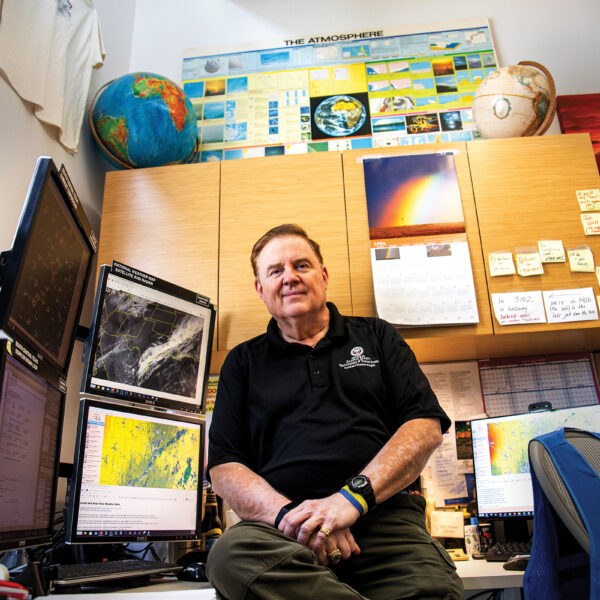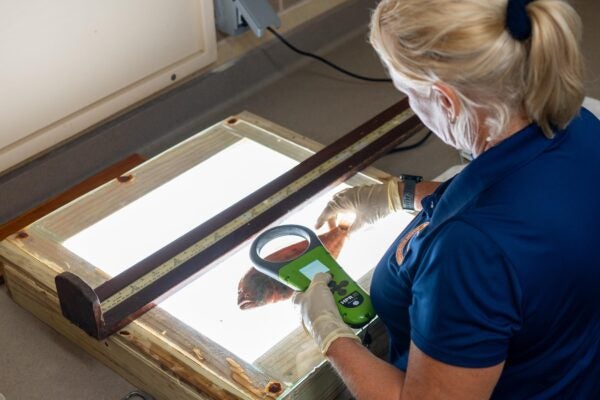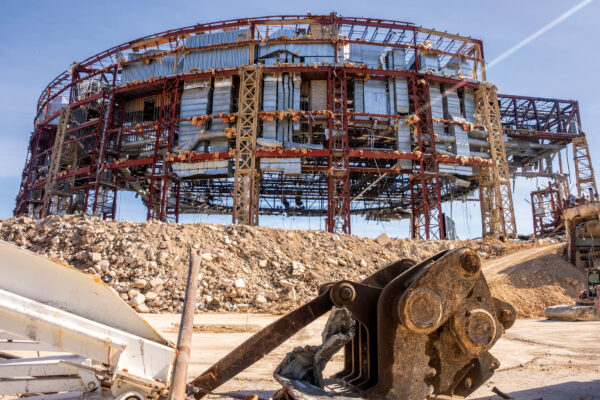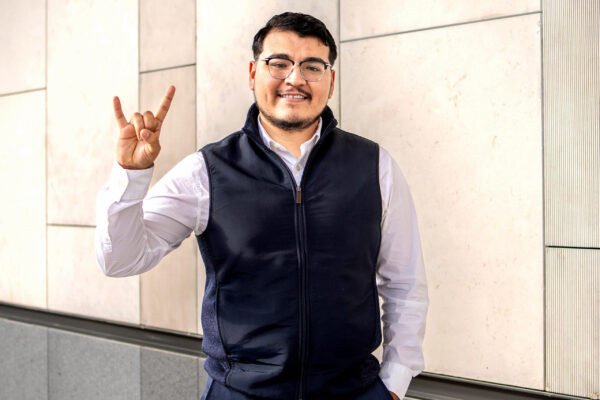By the fifth and sixth grade, I was going outside and watching the lightning during storms.
Lightning spidered across the sky, illuminating the town as if it were midday. Not far behind it, thunder boomed and crackled, forcefully shaking the house.
A little boy, no older than 10, cowered under the covers, trembling harder with each flash and thunderclap, hiding from the world and wishing for the storm to end. Living in Mississippi, he knew thunderstorms were no rare occurrence, but that knowledge did not stop the overpowering fear he felt at each flash and pop.
With Troy M. Kimmel Jr.’s fear of lightning and thunder verging on debilitating, his childhood educators took him to the library to study the phenomena. Peggy Brawner, his English teacher, was the driving force. She supplied him with every book an elementary school in the 1960s had on the weather, and she even went as far as ordering new ones to help him understand the science behind thunder and lightning and the limited threat they pose.
“By the fifth and sixth grade, I was going outside and watching the lightning during storms,” says Kimmel, senior lecturer in the UT Department of Geography and the Environment. “I’d be in the garage, looking out windows, which I would have never done before.”
On April 19, 1970, Kimmel and his family went to church as they did most Sundays; they barely noticed the ominous clouds coming their way. By midday, his dad had left town to go fishing 25 miles northeast on the Tennessee River. At 12:55 p.m. a tornado touched down in between the Pepsi-Cola plant his father worked at and Kimmel’s new middle school.
For six minutes, it thrashed a 3-mile-long path through the neighborhoods of the city, destroying three churches, wrecking a slew of homes, uprooting trees and telephone lines, and causing gas leaks. The tornado left four dead and 56 injured, putting 22 of those in the hospital. Its impact on the small town, especially the Black community, was so profound that every April 19 the local newspaper commemorates the disaster by reprinting the headline, “Tornado Sweeps Corinth Area.”
At home across town, unsure of the damage, Kimmel’s family got a call that his father’s plant may have been hit. Loading him and his sister into their station wagon, his mother made her way across town, driving past what remained. “I still remember today watching people walk away with blankets around them and covered in blood,” Kimmel says.
Coming upon the factory, Kimmel saw what remained of his school. The roof was nowhere in sight, but around the corner the Pepsi-Cola plant stood perfectly intact.
Kimmel says that meteorologists tend to have a weather event that seals their decision to choose a career in atmospheric science. The tornado was it for him. He has an old Associated Press photo of the damage to one of the churches, where two of the people died, hanging in his living room alongside family photos and memories of Mississippi. In the photo, scattered cinder blocks and plywood are all that remain; two people are wrapped in blankets looking at what little is left, mourning the sight.
“I think that sort of cemented everything,” Kimmel says. “It was very much an event that made an impression on me.”
After moving to Texas, Kimmel did anything he could to stay connected with the weather. During his junior and senior years of high school he began working in the layout department of the San Marcos Daily Record and for the local radio station, hoping to cover the weather but ultimately working on whatever he was assigned.
While attending Texas A&M University, he took a two-year break because he was confused about his direction in life. He decided to head back to Mississippi, where everything began. While back home, Kimmel ended up working for the local radio station WKCU, once again covering anything, this time including the weather.
Only a few weeks before he was set to move back to A&M, he got a call from a TV station in Bryan, asking him to be the weekend weatherman. It was the sign he needed. Kimmel finished his degree and worked for Channel 3 in Bryan until he graduated.
After bouncing around all kinds of news and weather stations in Central Texas in the ’70s and ’80s, he was approached by UT in 1988 to be a weather and climate lecturer.
“The Department of Geography approached me, and I never really understood how and why they got my name, but they did,” Kimmel says. “And the rest of it is sort of history.”
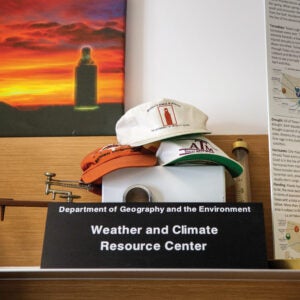
On 9/11, Kimmel was home with a good friend from the San Marcos Police Department when the first tower was hit. They looked at each other and at the same time agreed that the crash was no accident. As they sat there, they watched the second tower get hit. Heading to the university in a daze, Kimmel made his way down to the basement in the old Geography Building, where his lower-division weather and climate class was held every Tuesday and Thursday. Without speaking to the class, he rolled a big box TV into the auditorium, and they sat in silence and watched.
“(9/11) really, without me thinking about it, was what sealed the fate that led to 2005, when the head of Campus Safety and Security reached out and said, ‘You think Troy would be willing to help us as a meteorologist in Safety and Security?’” Kimmel says. “I said, ‘Absolutely, whatever I can do for you. I’m more than willing to help you.’” Kimmel is no stranger to witnessing disasters. His desire to mitigate the subsequent human impact motivates the work he does today.
Kimmel has been working as the only meteorologist for the UT Safety and Security Committee ever since, advising on weather events that could lead to campus closures or delay sporting events.
“He is certainly a wealth of information,” says Jimmy Johnson, assistant vice president for Campus Safety. “It has really made our jobs easier in Campus Safety. He provides good forecasts and outlooks to the campus community at large and (is) so instrumental to what I do. I couldn’t do it without him.”
When Kimmel believes inclement weather will hit, he gives Johnson a call. They then work up a recommendation to present to the president’s office based on what they believe is going to happen. From there, the president decides whether to close the campus or delay an event.
“Troy has been a godsend. (There have been) many late nights spent with him during winter weather, and I am like, ‘All right, give me your best guess,’” Johnson says.
Johnson and Kimmel have worked closely together now for 15 years, making tough calls including campus closures and the postponement of a graduation commencement.
“That’s just the nature of the beast. Weather forecasting is an imperfect science,” Kimmel says. “Although, if you look at what we do, contrary to all the jokes you hear about meteorologists and so forth, our accuracy rate in forecasts for today/tonight are better than 85% on average. That’s a grade I’ll take every time.”
